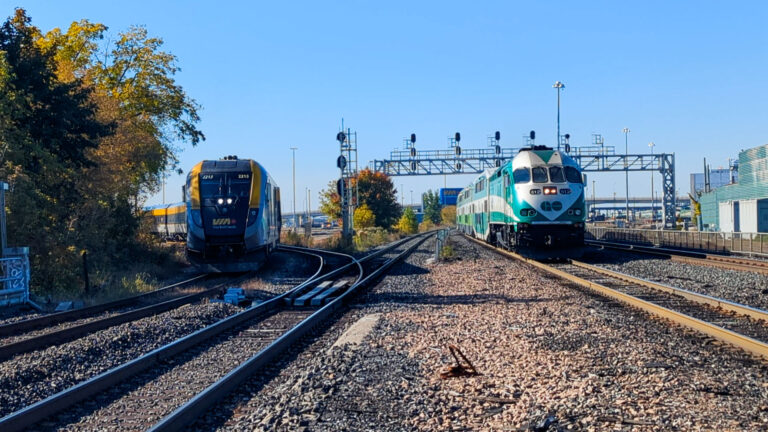With the track plan in hand, I was eager to start laying some rails. However, I was a little discouraged by the cost involved, as well as the possible modifications that would be needed to accommodate prefabricated turnouts. Looking over the meagre supplies on hand, I decided that this layout would need to be a combination of prefab and hand-laid turnouts. I was fortunate to have a number of PECO set-track switches on hand purchased several years ago when I was going to construct a small shelf layout. The advantage of these switches was that they had very tight diverging radii, and operated reliably. Their downfall was that consequently they have a toy-like in appearance because of this sharp radius, and they have limited uses when creating yards or parallel tracks.
Reviewing my track plan, I determined that I could use the old PECO switches in the hidden staging yards, but the visible tracks would need to be hand-laid. Besides the financial advantage, there was also the benefit that I could create curved turnouts on the return loop, I would be able to build #5 turnouts on the passing tracks, and the diamonds could be made to fit tightly with the interchange track.
Undaunted, I began researching the techniques for hand-laying turnouts, and overall, I was disappointed with the lack of concise material. Fifty years ago, layout builders had to make everything ‘ and I suppose along the way the secrets of turnout construction became part of an oral tradition that I’m just not privy too. I gleaned as much information as best I could from magazines, websites and books, and developed the following method for constructing turnouts.
In order to make the process easier, I built each of the switches on the workbench, planning to later connect them together on the baseboard. I copied the particulars of my plan onto sheets of paper and used these full-size templates to build each of the turnouts.
Overall, I was pleasantly surprised as to how well the switches turned out. Their reliability exceeded my expectations ‘ operating smoothly, with minimal tuning required. On the downside, despite my best efforts, they are not as aesthetically pleasing as the more expensive commercial turnouts. However, with some paint, ballast and other assorted scenic camouflages, they will likely avoid the scrutiny of the critical eye.





























